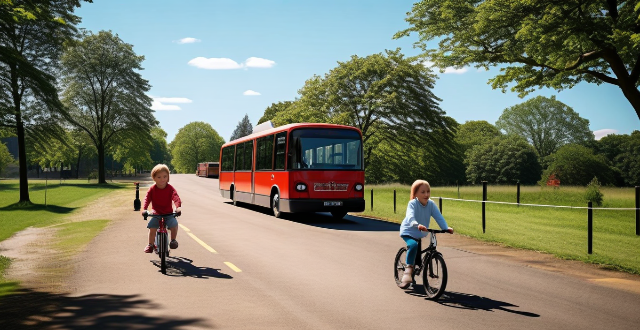The article discusses ways to improve public transportation systems, including investing in infrastructure, improving reliability and on-time performance, increasing accessibility, and promoting sustainability. It suggests building new stations, purchasing new vehicles, upgrading existing facilities, reducing delays, improving communication with passengers, improving accessibility for people with disabilities, seniors, and families with young children, reducing emissions from vehicles, and promoting alternative modes of transportation such as biking and walking.

Improving Public Transportation Systems
Public transportation systems are a crucial aspect of modern urban life. They provide a means for people to travel efficiently and affordably, reducing traffic congestion and air pollution. However, many public transportation systems around the world are facing challenges such as overcrowding, delays, and inaccessibility. In this article, we will discuss some ways to improve public transportation systems to make them more efficient and accessible.
1. Investing in Infrastructure
One of the most important factors in improving public transportation systems is investing in infrastructure. This includes building new stations, purchasing new vehicles, and upgrading existing facilities. By investing in infrastructure, public transportation systems can increase their capacity and reduce crowding, making it easier for people to use them.
- Building New Stations: Building new stations in areas where demand is high can help alleviate overcrowding and shorten wait times.
- Purchasing New Vehicles: Purchasing new vehicles can increase the capacity of public transportation systems and reduce maintenance costs.
- Upgrading Existing Facilities: Upgrading existing facilities can improve the overall quality of service and make it easier for people to use public transportation.
2. Improving Reliability and On-Time Performance
Another important factor in improving public transportation systems is improving reliability and on-time performance. This includes reducing delays and improving communication with passengers.
- Reducing Delays: Reducing delays can be achieved by improving maintenance schedules, increasing staffing levels, and implementing real-time tracking systems.
- Improving Communication with Passengers: Improving communication with passengers can be achieved by providing accurate information about schedules, delays, and route changes through mobile apps, websites, and other digital channels.
3. Increasing Accessibility
Increasing accessibility is essential for making public transportation systems more efficient and accessible. This includes improving accessibility for people with disabilities, seniors, and families with young children.
- Improving Accessibility for People with Disabilities: Improving accessibility for people with disabilities can be achieved by installing ramps, elevators, and other assistive devices at stations and on vehicles.
- Improving Accessibility for Seniors: Improving accessibility for seniors can be achieved by providing seating areas at stations and on vehicles, as well as offering discounted fares or free rides for seniors.
- Improving Accessibility for Families with Young Children: Improving accessibility for families with young children can be achieved by providing designated areas for strollers and car seats at stations and on vehicles.
4. Promoting Sustainability
Promoting sustainability is another important factor in improving public transportation systems. This includes reducing emissions from vehicles and promoting alternative modes of transportation such as biking and walking.
- Reducing Emissions from Vehicles: Reducing emissions from vehicles can be achieved by using cleaner fuels such as electric or hybrid vehicles.
- Promoting Alternative Modes of Transportation: Promoting alternative modes of transportation such as biking and walking can be achieved by building bike lanes and pedestrian paths, as well as offering incentives for people who choose to walk or bike instead of driving.